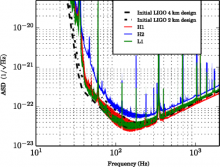
Abstract
Searches for gravitational-wave transients from binary black hole coalescences typically rely on one of two approaches: matched filtering with templates and morphology-independent excess power searches. Multiple algorithmic implementations in the analysis of data from the first generation of ground-based gravitational wave interferometers have used different strategies for the suppression of non-Gaussian noise transients, and targeted different regions of the binary black hole parameter space. In this paper we compare the sensitivity of three such algorithms: matched filtering with full coalescence templates, matched filtering with ringdown templates and a morphology-independent excess power search. The comparison is performed at a fixed false alarm rate and relies on Monte-carlo simulations of binary black hole coalescences for spinning, non-precessing systems with total mass 25-350 solar mass, which covers the parameter space of stellar mass and intermediate mass black hole binaries. We find that in the mass range of 25 -100 solar mass the sensitive distance of the search, marginalized over source parameters, is best with matched filtering to full waveform templates, to within 10 percent at a false alarm rate of 3 events per year. In the mass range of 100-350 solar mass, the same comparison favors the morphology-independent excess power search to within 20 percent. The dependence on mass and spin is also explored.